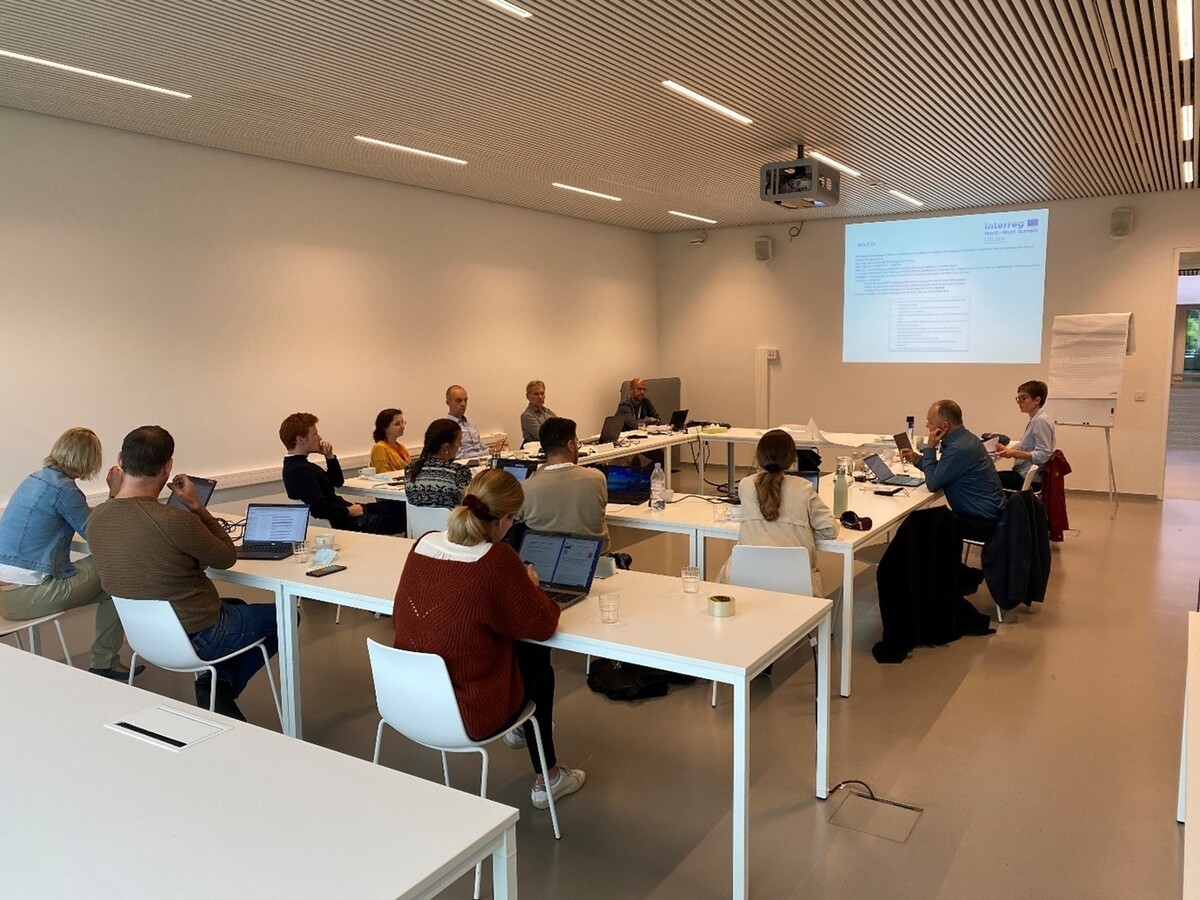Sprinting from 5GDHC Principles to Key Performance Indicators
Create a subpage- D2Grids Communication
- /
- the 30-09-2021
- / 1298

D2Grids is the first EU project setup to bring forth the development of the 5th Generation of District Heating and Cooling (5GDHC) grids. The first challenge was to clearly put forward a definition of what a 5GDHC grid is, which resulted in five core principles. But with thosee principles alone, it is hard if not impossible to assess whether a DHC grid is a 5GDHC grid, not just in practice but even in the design stage. For that, a set of Key Performance Indicators (KPI’s) are required derived from the reasoning and goals for each of the principles. D2GRIDS partners VITO, Greenflex, Mijnwater, Open University and Stroomversnelling took on the challenge to form a complete set of 5GDHC-KPI’s (version 1.0) within 3 days during the “sprint session” hosted by VITO in GENK from 15 to 17 september 2021.
Getting SMART
Developing such a set of KPI’s started more than a year ago and it proved to be a challenging task. Partly because of the different visions on the why and how behind 5GDHC and differences in background and experience amongst the partners, sometimes linked to differences in national developments on the subject. Another factor is the different development stages of the pilot sites, to which they should be applied. And the Corona situation did not help as well. Creating a completely new concept such as 5GDHC including a SMART set of KPI’s requires collective brain power, thorough discussion and creativity.
Since the midterm meeting during COP26, is only a few months away, it was decided to set-up the first D2Grids “sprint session”.
15-9 Flying start
For the first day the goal was to come to an agreement on KPI’s for the first three principles. Several partners prepared their version of KPI’s and/or considerations regarding KPI’s for all five principles in advance, which helped the sprint with a flying start. Nonetheless, we quickly discovered that we had sometimes different interpretations on the principles, be it their definition, the short description provided or the main reason and/or underlying goal for each of the principles. Maybe even more important we had to re-assess the original system boundaries in order to better abide with the principles on the one hand and establish SMART principles on the other.
After a day of discussions, we managed to come up with a renewed assessment of the system boundaries (now including the thermal energy systems connected to and/or installed in the buildings), KPI’s for the first two principles and an idea for the third principle.
16-9 Speeding Up
We managed to finalise the open ends on the third principle and put all results on every principle into the provided format. We even managed to test some of the KPI’s on the VITO 5GDHC system, which helped clarify the value of the chosen KPI’s, not just for assessment but more importantly for providing insight and advice on possible future developments for such systems.
17-9 Finishing early
The final day we set out to test our KPI-set with one of our pilot-partners: Bochum. Although they could not give as all required input instantly, it was clear that the required data should be available or easily made available. With this stress-test successfully completed, we decided that we had our KPI-set version 1.0 and would come up with a KPI-set 2.0 during COP26. This would give the pilots the time to deliver the provided data and discuss possible thresholds for each of the KPI’s, so that a clear distinction can be made between 5GDHC and networks designed according to 1G-4G principles. It would also provide as the time to come up with a communication format and strategy with the communication experts from Construction21.
In Conclusion
The ‘sprint session’ approach was, to the opinion of the authors, the ideal approach for this stage of our process concerning the definition of SMART KPI’s. Not just because of the intellectual challenge, but also to fortify the relations amongst partners, which help the realisation of better results with future challenges. We are looking forward to such challenges and working on them. Next step : the upcoming Mid Term event on the occasion of COP26!
Ivo Opstelten (Stroomversnelling) and Gert Moermans (VITO)
contact[a]5GDHC.eu
